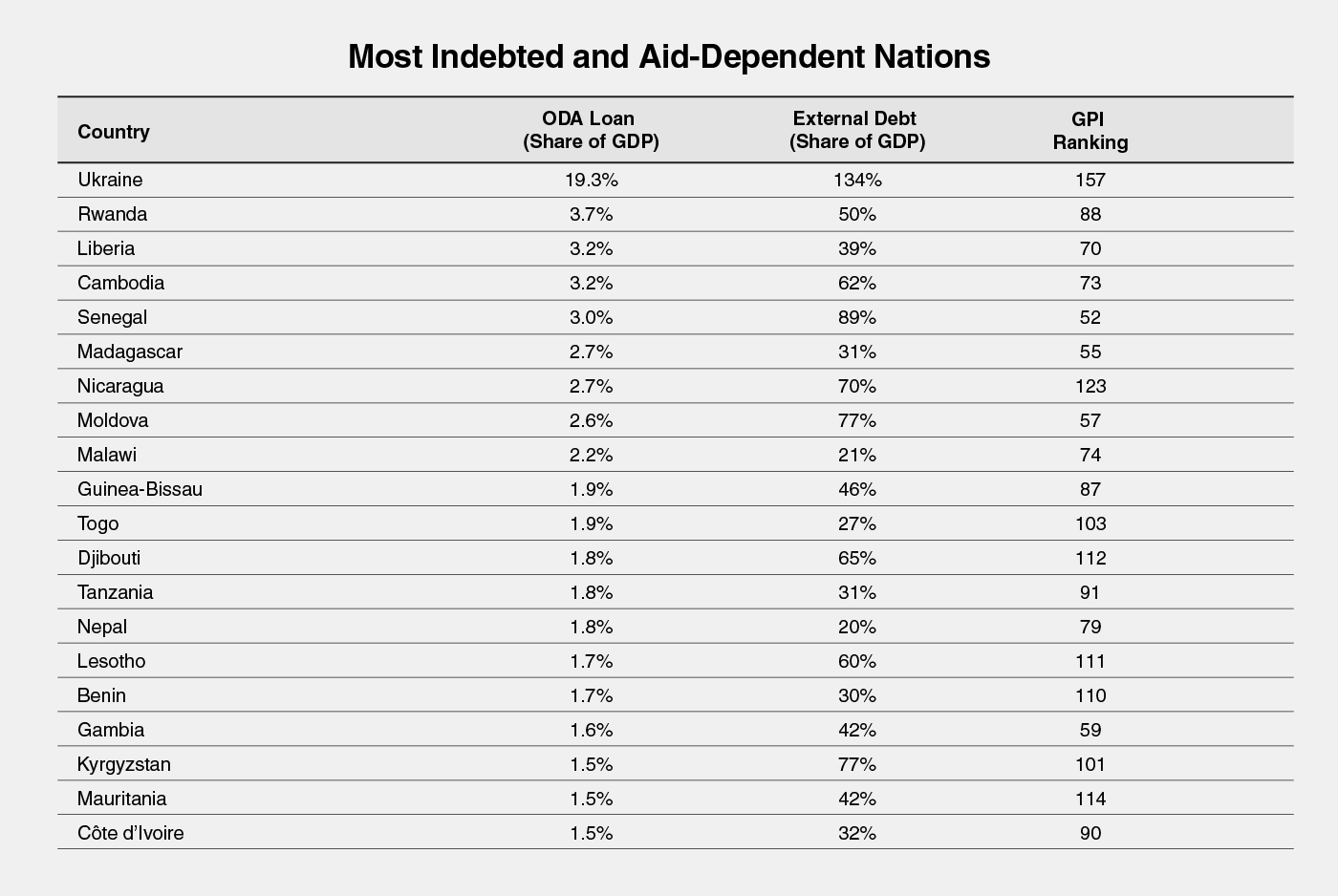Across the globe, a silent crisis is unfolding in countries where development is heavily financed through loans rather than domestic resources.
Total Official Development Assistance (ODA) loans nearly doubled between 2014 and 2023, rising from US$38 billion to US$74 billion. A growing number of low- and middle-income nations remain critically dependent on these loans.
Ukraine stands out with the highest debt and ODA loan-to-GDP ratios, largely due to the extraordinary circumstances it faces in its ongoing three-year war with Russia.

But beyond the unique situation in Ukraine, ODA loans are now central to a mounting financial and political challenge. While intended to bridge fiscal gaps and support development, several countries demonstrate significant reliance on ODA loans. Rwanda, Liberia, Cambodia, and Senegal receive loans equivalent to 3% or more of their GDP. These figures reflect the vulnerability of these economies to sudden changes in aid flows or credit terms.
Compounding this issue, many of these countries also carry high levels of external debt. Without structured and sustainable debt resolution, an inability to meet repayments could spark widespread instability.
This urgency is underscored by recent announcements from key donors, including the United States and several European nations, indicating their intention to reduce aid disbursements. If grants are cut and loans forgiven without coordinated restructuring, the consequences may be severe.
Poorly managed debt cancellation can make future borrowing more difficult and expensive. Creditors tend to be wary of lending to countries with a history of write-offs, especially in the absence of meaningful reform. As a result, financing essential development areas like infrastructure, education, and health becomes increasingly difficult, worsening poverty and fuelling political and social tension.
In some cases, this economic fragility overlaps with an already precarious security environment. Countries such as Nicaragua, Djibouti, and the Democratic Republic of the Congo rely heavily on ODA loans and also rank poorly in the Global Peace Index (GPI). With weak governance and high levels of violence, these nations are particularly susceptible to further destabilisation if foreign funding dries up, or becomes harder and more expensive to access.
Historical experience offers critical insights. The Jubilee 2000 movement, which advocated for cancelling the debts of the world’s poorest countries, led to debt relief through the Heavily Indebted Poor Countries (HIPC) initiative. Many beneficiaries redirected funds toward social sectors. Following this, the average external debt-to-GDP ratio in developing countries fell from about 40% in the late 1990s to the low twenties a decade later.
In recent years, external debt ratios in developing countries have remained relatively stable, hovering around 20–25% of GDP. This may appear manageable compared to debt levels in wealthier nations. However, the reality is more troubling. Since 2023, net financial flows to developing countries have turned negative – a trend that appears unsustainable and raises serious concerns about their long-term financial stability.
At the same time, the world has become less peaceful according to the latest GPI reports. Unlike advanced economies, poorer countries lack easy access to capital markets. Lenders perceive them as riskier, resulting in higher borrowing costs and limited options. For nations susceptible to conflict and violence, restricted access to debt and development loans could accelerate the slide into instability and unrest.
The convergence of debt, aid cuts, and insecurity makes development finance management especially difficult for vulnerable states. Many also face peace and security risks, amplifying the challenge. Temporary debt relief is insufficient; effective restructuring must include fiscal reform, institutional strengthening, and long-term planning. Without this, creditworthiness may decline, worsening crises.
To protect decades of progress, the global community must urgently implement coordinated, strategic responses that promote sustainable peace, development, and resilience in the most at-risk regions.